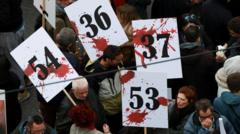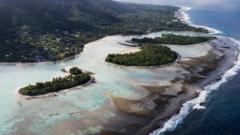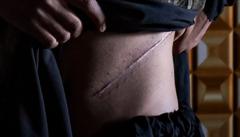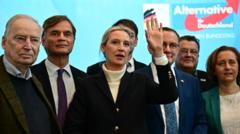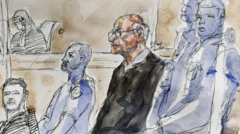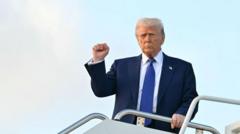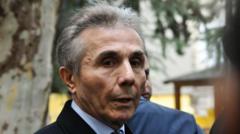In a city marked by inequality and environmental distress, Kairos Futura strives to create a hopeful narrative for Nairobi's future.
Reimagining Utopia: Nairobi's Artistic Visionaries
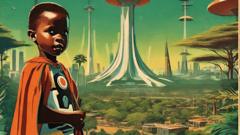
Reimagining Utopia: Nairobi's Artistic Visionaries
A collective of artists challenges Nairobi's dystopian realities through imaginative exhibitions.
Kenya's capital, Nairobi, has earned the title of “the green city in the sun,” yet this viewpoint is highly variable, distinctively influenced by one’s environment within the city. For residents in affluent areas, this moniker holds true, while for those confined to densely populated slums, such as Mathare, the landscape is starkly different, plagued by poverty and environmental degradation including flooding and landslides.
In response to this disparity, the art collective Kairos Futura emerged to reimagine the elements of urban despair, unveiling a vision for a brighter, more inclusive future. Their exhibition, Hakuna Utopia, showcases the work of seven artists who delve into themes of both apocalypse and resilience, reflecting the myriad challenges faced by Nairobi’s six million inhabitants.
Among the artists is Stoneface Bombaa, hailing from the impoverished Mathare region. Having navigated significant challenges to realize his artistic ambitions, Bombaa aims to shed light on the struggles of his community, which grapples with job scarcity, inadequate housing, and lack of educational opportunities. He describes life in Mathare as a constant, precarious “hand-to-mouth economy,” where uncertainty looms over fundamental daily needs. Yet through art, he seeks transformation, channeling the community’s frustration into collaboration and unity.
Bombaa’s vision extends to creating “micro-utopia” spots within the urban fabric, such as the proposed “jungle room,” intended to foster connections with nature right in Mathare. However, plans stumbled when the designated site was demolished to pave way for infrastructure. Undeterred, Bombaa has orchestrated outings for local children to Nairobi’s lush parks, introducing them to nature amid their stark surroundings. He asserts, “There are no trees or green spaces in Mathare,” and strives to advocate for equitable access to the city’s natural beauty, challenging the notion that financial constraints should bind communities to urban squalor.
Another artist, Coltrane McDowell, draws inspiration from the natural world to innovate architecture, with his project, Invisible Cities, reinterpreting building designs through the lens of termite mounds. Abdul Rop, known for his captivating woodcuts and paintings, echoes the sentiment of collective action for achieving utopia. He emphasizes that collaboration is essential for Nairobi’s youth, especially amidst widespread dissatisfaction with pervasive corruption stifling their potential. Following public protests against taxing policies in recent months, Rop encourages his peers to harness artistic expression as a means of enacting meaningful social change.
The work of Ajax Axe, transforming mundane school chairs into imaginative art pieces, adds to the exhibition's dynamic exploration of potential.
Kairos Futura encapsulates an ambitious notion: envisioning a united, reimagined Nairobi is not a distant fantasy but an essential pursuit in the context of today’s urgent challenges. The message is clear: "The moment to act for the future is now."

